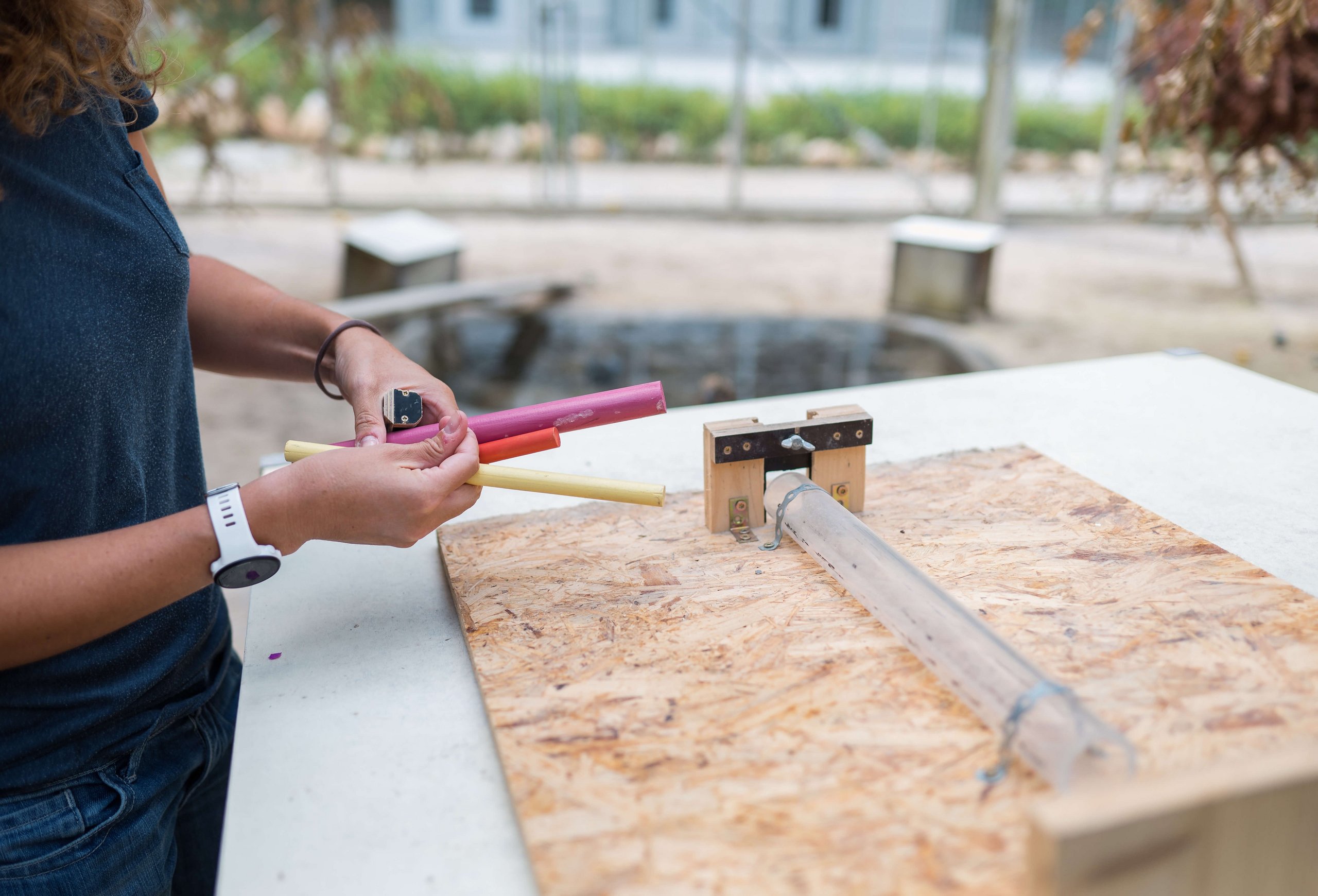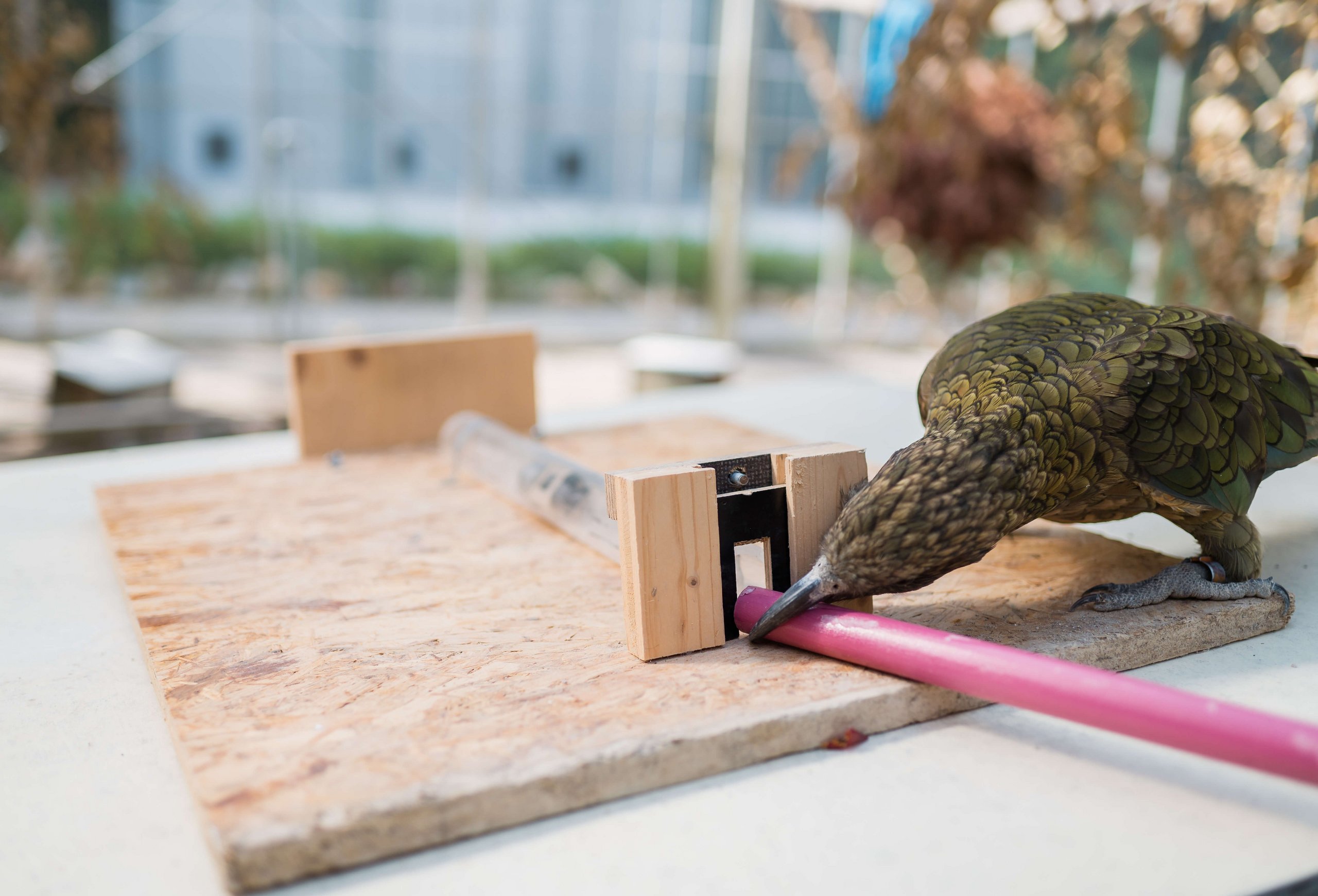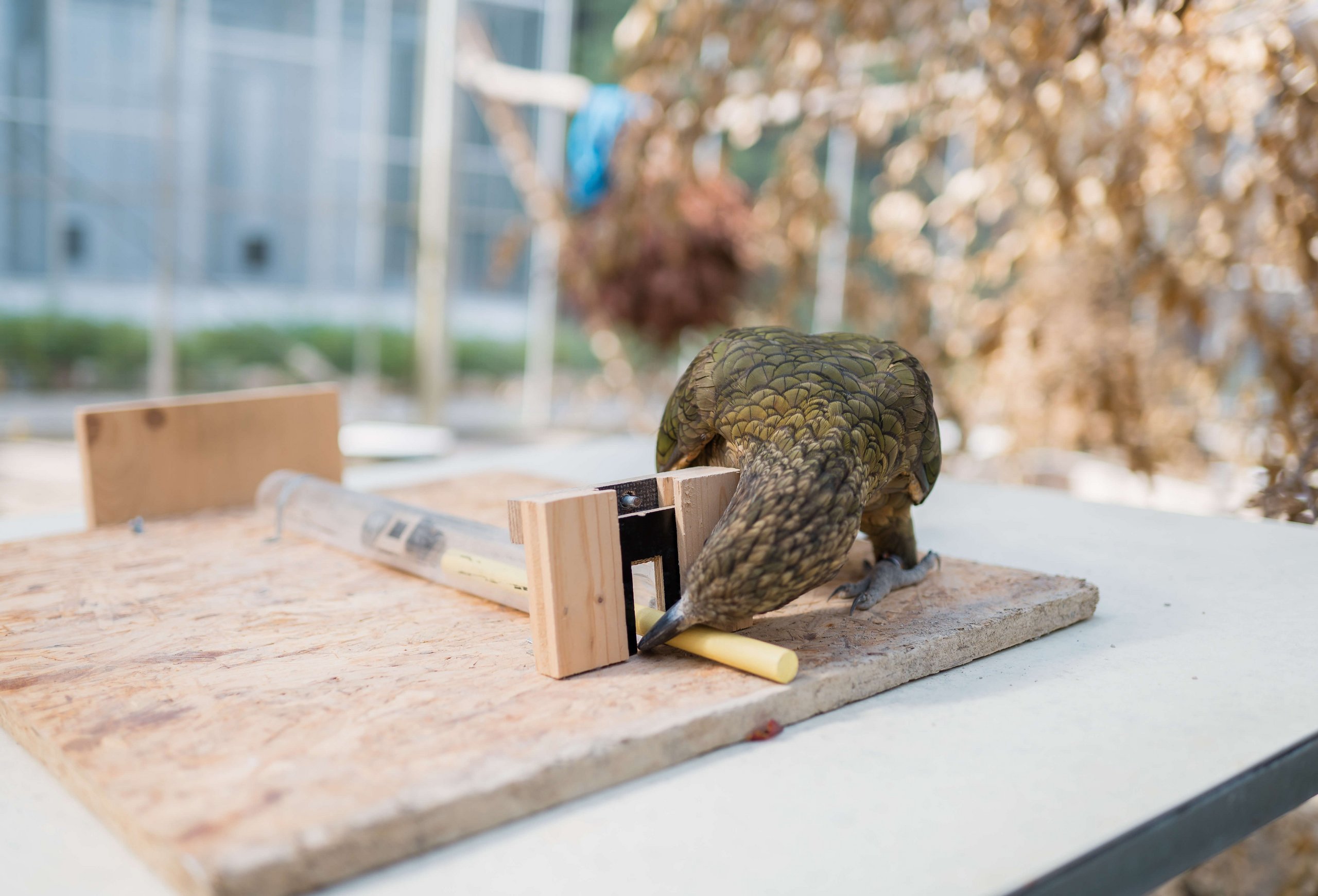Projects
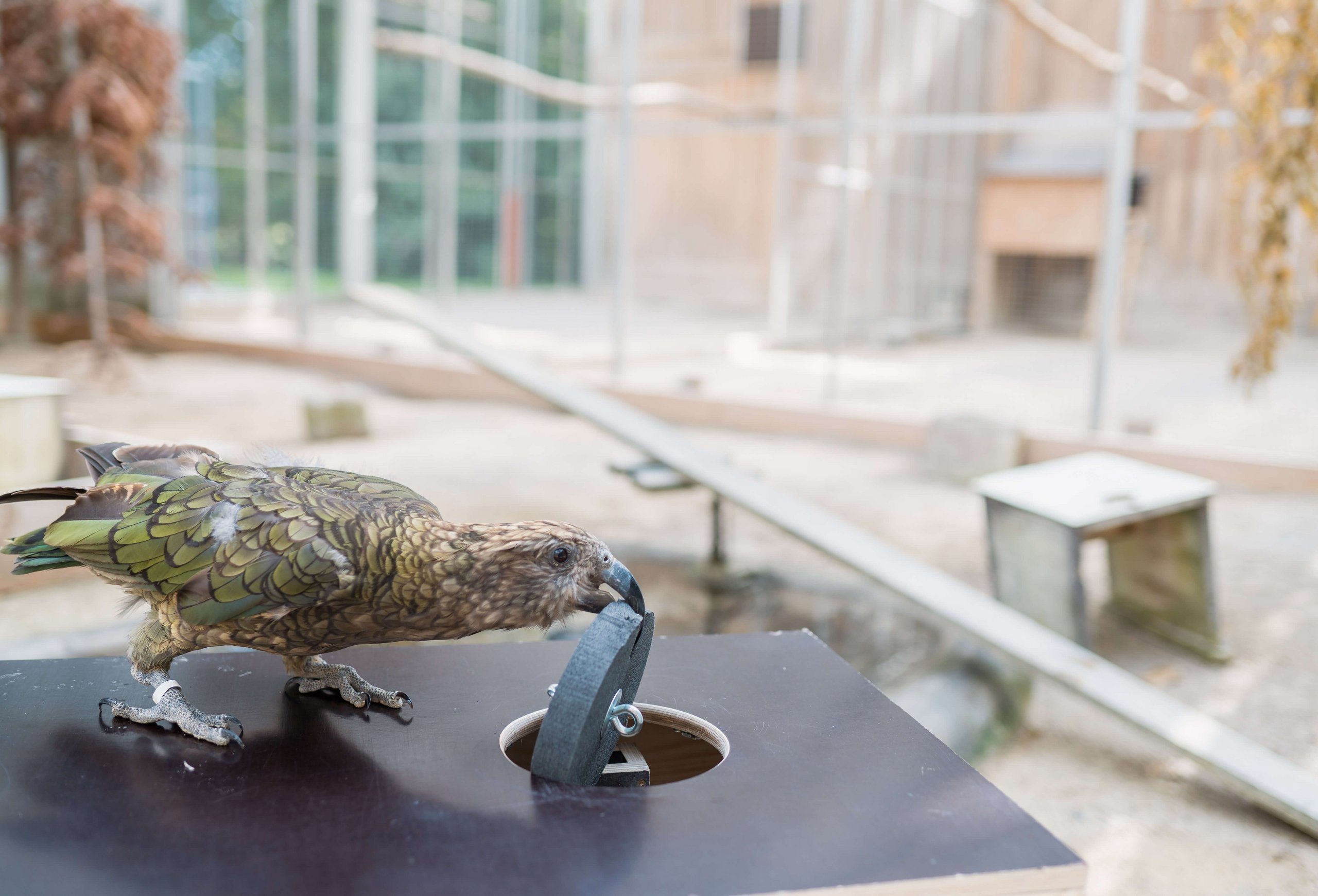
Investigating the fidelity of kea parrots in conspecific demonstrated motor actions. The project is designed to utilize tried and tested two-action tasks, to investigate basic imitation in a simple setup, before moving on to implement novel methodologies. Sequential learning imitation allows for detailed analysis of fidelity, while trained movement imitation will probe overimitation abilities.
PI: Raoul Schwing
Funding agency: FWF – Austrian Science Fund
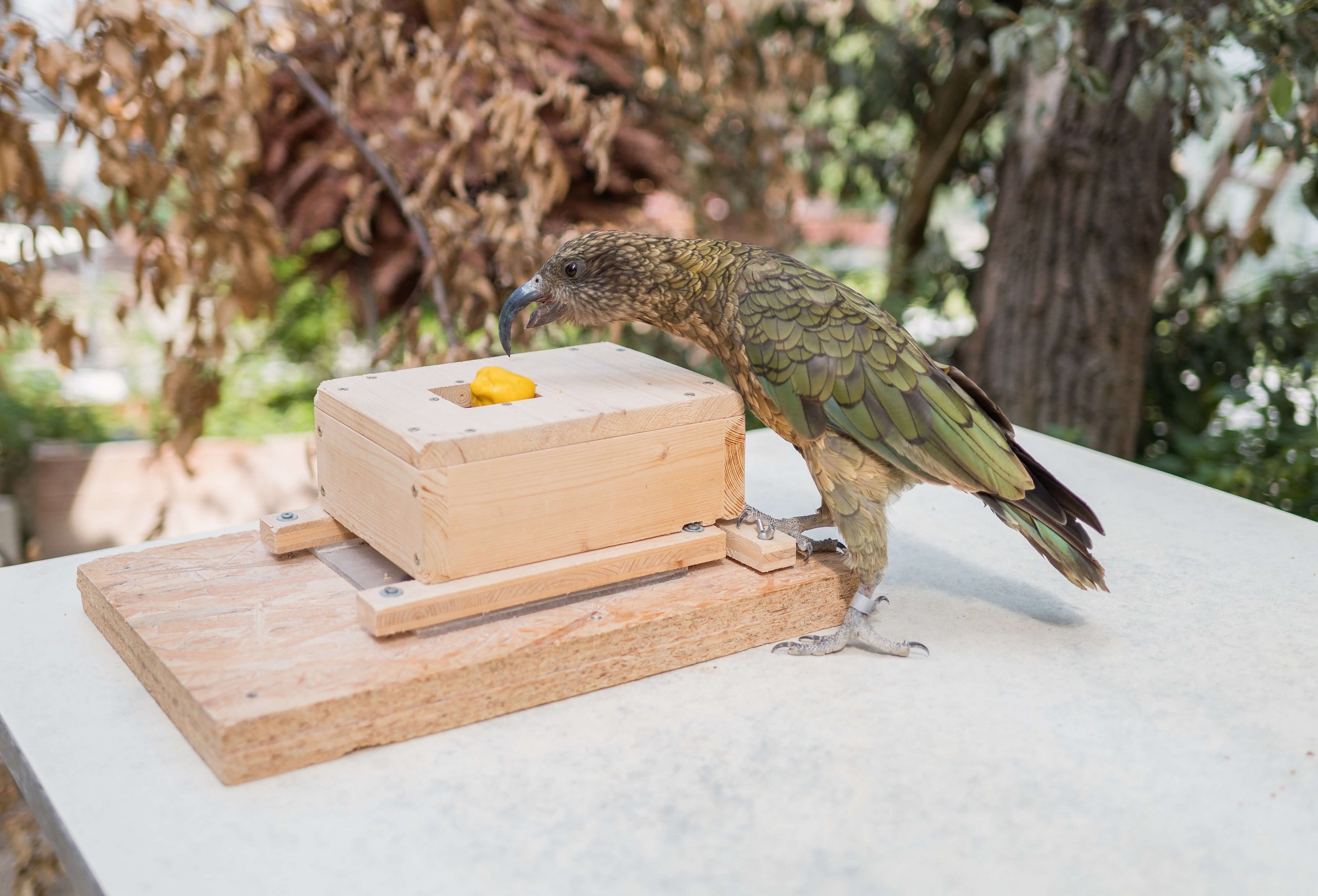
Kea are adept at solving new problems based on visual features (e.g., choosing an appropriately shaped tool), but to what extent do they reason about physical properties they cannot see, such as weight? This project investigates the kea’s understanding of weight, including how they attend to and infer the weights of objects, and whether they can use information about weight to solve problems.
PI: Megan Lambert
Funding agency: FWF – Austrian Science Fund
The curiosity of kea: context, causes and consequences
Curiosity is thought to play a key role in behavior and cognition, yet we still possess a surprisingly limited understanding of curiosity and how it operates in nonhuman animals. This project investigates curiosity in kea and other birds to understand its different components, how these are expressed in various contexts and what the behavioural and cognitive outcomes of curiosity are.
PI: Megan Lambert
Funding agency: FWF – Austrian Science Fund
The Latest Publications (2020–)
Suwandschieff, E; Huber, L; Bugnyar, T; Schwing, R(2024): Kea, bird of versatility. Kea parrots (Nestor notabilis) show high behavioural flexibility in solving a demonstrated sequence task. J Ornithol. 2024 165 (1) 49-55.
Miller, R; Lambert, ML; Frohnwieser, A; Brecht, KF; Bugnyar, T; Crampton, I; Garcia-Pelegrin, E; Gould, K; Greggor, AL; Izawa, EI; Kelly, DM; Li, Z; Luo, Y; Luong, LB; Massen, JJM [and 11 others](2022): Socio-ecological correlates of neophobia in corvids. Curr Biol. 2022; 32(1):74-85.e4
Suwandschieff, E; Mundry, R; Kull, K; Kreuzer, L; Schwing, R(2023): 'Do I know you?' Categorizing individuals on the basis of familiarity in kea (Nestor notabilis). R Soc Open Sci. 2023; 10(6):230228
Suwandschieff, E; Wein, A; Folkertsma, R; Bugnyar, T; Huber, L; Schwing, R(2023): Two-action task, testing imitative social learning in kea (Nestor notabilis). Anim Cogn. 2023 26 (4) 1395-1408.
Lambert, PJ; Herbert-Read, JE; Ioannou, CC(2021): The measure of spatial position within groups that best predicts predation risk depends on group movement. Proc Biol Sci. 2021; 288(1958):20211286
Laschober, M; Mundry, R; Huber, L; Schwing, R (2021): Kea (Nestor notabilis) show flexibility and individuality in within-session reversal learning tasks. Anim Cogn. 2021 24 (6) 1339-1351.
Schwing, R; Meaux, E; Piseddu, A; Huber, L; Noë, R (2021): Kea, Nestor notabilis, achieve cooperation in dyads, triads, and tetrads when dominants show restraint. Learn Behav. 2021 49 (1) 36-53.
Wein, A; Schwing, R; Yanagida, T; Huber, L (2021): Vocal development in nestling kea parrots (Nestor notabilis). Bioacoustics 30 (2) 142-162.
Colbourne, J. A. D., Auersperg, A. M. I., Lambert, M. L., Huber, L., & Völter, C. J. (2021). Extending the Reach of Tooling Theory: A Neurocognitive and Phylogenetic Perspective. Topics in Cognitive Science.
Lambert, PJ; Stiegler, A; Rössler, T; Lambert, ML; Auersperg, AMI (2021): Goffin's cockatoos discriminate objects based on weight alone. Biol Lett. 2021; 17(9):20210250.
Miller, R; Lambert, ML; Frohnwieser, A; Brecht, KF; Bugnyar, T; Crampton, I; Garcia-Pelegrin, E; Gould, K; Greggor, AL; Izawa, EI; Kelly, DM; Li, Z; Luo, Y; Luong, LB; Massen, JJM [and 11 others] (2021): Socio-ecological correlates of neophobia in corvids. Curr Biol. 2021; S0960-9822(21)01468-8.
Auersperg, AMI; Schwing, R; Mioduszewska, B; O’Hara, M; Huber, L (2020): Do puffins use tools? PNAS 117(22):11859.
Picard, AM; Mundry, R; Auersperg, AM; Boeving, ER; Boucherie, PH; Bugnyar, T; Dufour, V; Emery, NJ; Federspiel, IG; Gajdon, GK; Guery, JP; Hegedic, M; Horn, L; Kavanagh, E; Lambert, ML [and 10 others] (2020): Why preen others Predictors of allopreening in parrots and corvids and comparisons to grooming in great apes. Ethology. 2020 126 (2) 207-228.
Schwing, R; Reuillon, L; Conrad, M; Noe, R; Huber, L (2020): Paying attention pays off: Kea improve in loose-string cooperation by attending to partner. Ethology 126 (2) 246-256.
Wein, A; Schwing, R; Huber, L (2020): Kea Nestor notabilis mothers produce nest-specific calls with low amplitude and high entropy. Ibis 162(3): 1012-1023.
Völter, C., Lambert, M., & Huber, L. (2020). Do nonhuman animals seek explanations? Animal Behavior and Cognition, 7(3), 446–451.
Lambert, ML; Osvath, M (2020): Investigating information seeking in ravens (Corvus corax). Anim Cogn. 2020 23 (4) 671-680.
